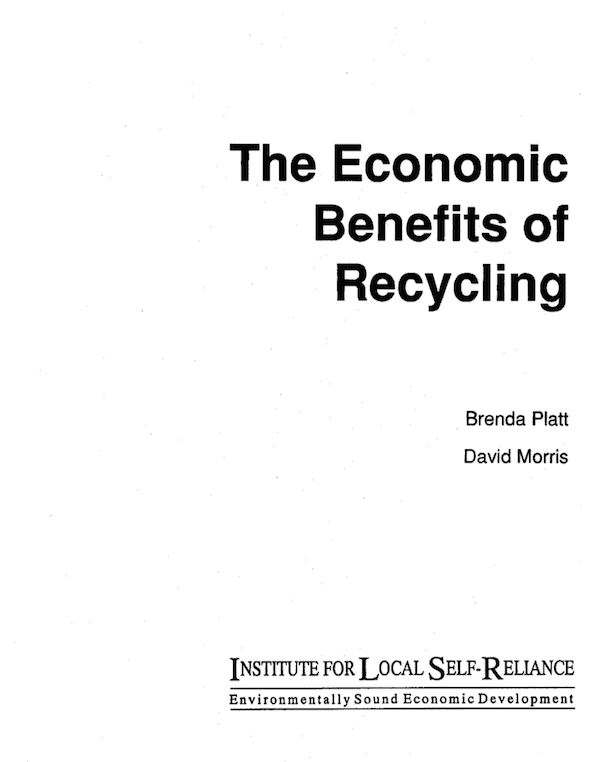Extended producer responsibility (EPR), based on the “polluter pays” principle, entails making manufacturers responsible for the entire lifecycle of the products and packaging they produce. One aim of EPR policies is to internalize the environmental costs of products into their price. Another is to shift the economic burden of managing products that have reached the end of their useful life from local government and taxpayers to product producers and consumers.
The concept of EPR was first formally introduced in Sweden by Thomas Lindhqvist in a 1990 report to the Swedish Ministry of the Environment.(1) In subsequent reports prepared for the Ministry, the following definition of EPR emerged:
Extended Producer Responsibility is an environmental protection strategy to reach an environmental objective of a decreased total environmental impact from a product, by making the manufacturer of the product responsible for the entire life-cycle of the product and especially for the take-back, recycling and final disposal of the product.(2)
The Swedish reports further specified how manufacturers can take responsibility for their products:
Liability: refers to a responsibility for proven environmental damages caused by the product in question. The extend of the liability is determined by legislation and may embrace different parts of the life-cycle of the product, including usage and final disposal.
Economic responsibility: means the producer will cover all or part of the costs for collection, recycling, or final disposal of the product manufactured. These costs could be paid directly by the producer or by a special fee.
Physical responsibility: is used to characterize the systems where the manufacturer is involved in the actual physical management of the products or the effects of the products.
Informative responsibility: signifies several different possibilities to extend responsibility for the products by requiring producers to supply information on the environmental properties of the products manufactured.
EPR initiatives include product take-back programs, deposit refund systems, product fees and taxes, and minimum recycled-content laws.
EPR puts the onus upon the manufacturer and to many, represents a mandatory approach. A related approach, Product Stewardship, is gaining in popularity because of its less regulatory nature and its recognition that other parties have a role to play.
Product Stewardship means that all parties – designers, suppliers, manufacturers, distributors, retailers, consumers, recyclers, and disposers – involved in producing, selling, or using a product take responsibility for the full environmental and economic impacts of that product.
(1) Thomas Lindhqvist & Karl Lidgren, “Modeller för förlängt producentansvar” (“Models for Extended Producer Responsibility,” in Swedish), 26 October 1990, published by the Ministry of the Environment in “Från vaggan till graven — sex studier av varors miljöpåverken” (“From the Cradle to the Grave — six studies of the environmental impact of products,” in Swedish), DC 1991:0.
(2) Thomas Lindhqvist, “Mot ett förlängt producentansvar — analys av erfarenheter samt förslag” (“Towards an Extended Producer Responsibility — analysis of experiences and proposals,” in Swedish), 30 April 1992, published by the Ministry of the Environment and Natural Resources ini “Varor som faror — Underlagsrapporter” (“Products as Hazardous — background documents,” in Swedish), Ds 1992:82. The definition was published in English for the first time in: Thomas Lindhqvist, “Extended Producer Responsibility,” in the proceedings of an invitational seminar at Trolleholm Castle, 4-5 May 1992: “Extended Responsibility as a Strategy to Promote Cleaner Products,” edited by Thomas Lindhqvist, Department of Industrial Environmental Economics, Lund, June 1992.




